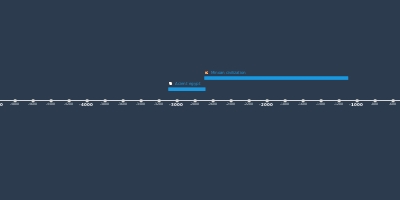The 19th century (dec 30, 1801 – aug 30, 1900)
Description:
By the early 19th century men's fashions had also undergone a radical change. The coat still finished in long tails at the back but was cut higher in front. The waist-length square-cut waistcoat showed beneath it. The lining of the shoulders and upper chest of the coat was sometimes quilted to improve the fit. In the early 19th century some dandies wore boned corsets to give them a small waist, men adopted long trousers rather than knee breeches. Trousers became increasingly fashionable in the first quarter of the 19th century. At first they were only worn for day and informal dress but by the 1820s they were acceptable for evening wear. Breeches continued to be worn at court.women's dress gradually revealed the actual form of the body. In the 1820s and 1830s the waistline deepened, returning to its natural position. As the natural waist returned the bodice required a tighter fit and in contrast the skirt became fuller and bell-shaped. There were several different sleeve styles but short puffed sleeves were generally worn for evening and long sleeves for day. Corsets continued to be worn. These were lightly boned and quilted, with a deep busk. Several layers of petticoats with frilled hems, sometimes of horsehair, were worn to support the full skirts. Some petticoats of the 1840s were feather-quilted. Later examples of the 1850s and 1860s were made of 'crin' and steel hoops. The term 'crinoline' is derived from the French word crin which means horsehair.
Added to timeline:
Date:
dec 30, 1801
aug 30, 1900
~ 98 years
